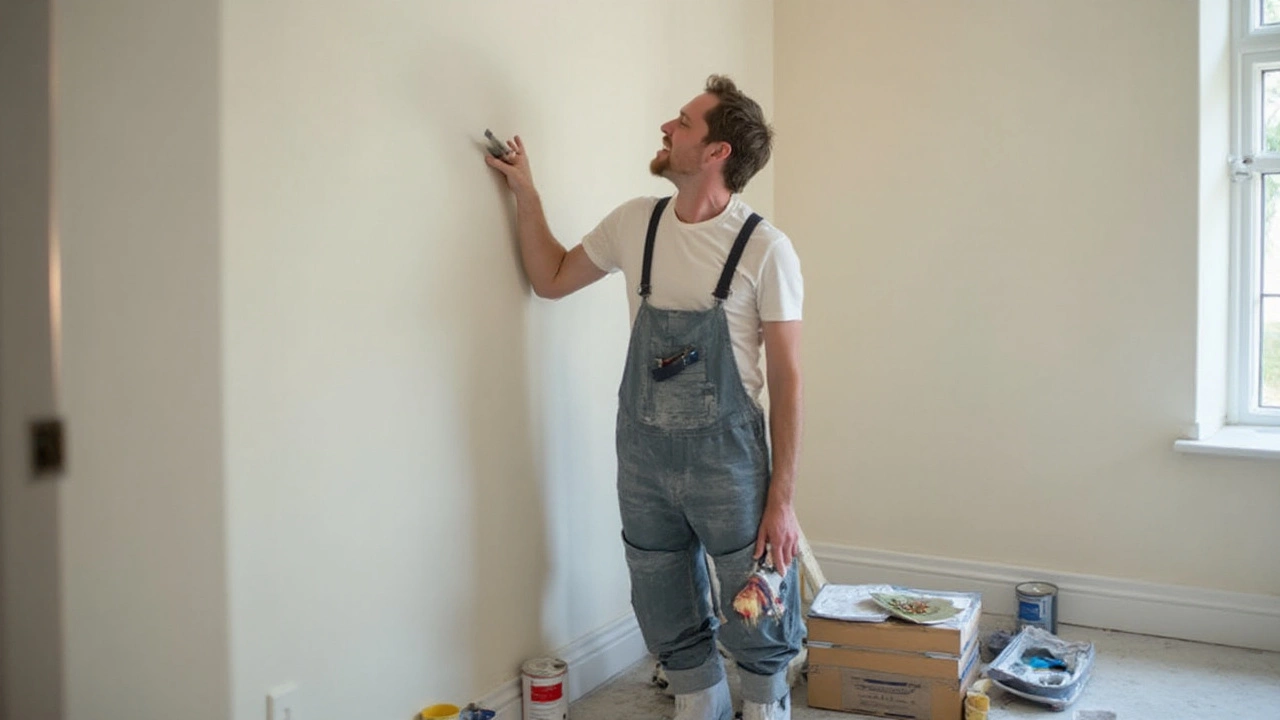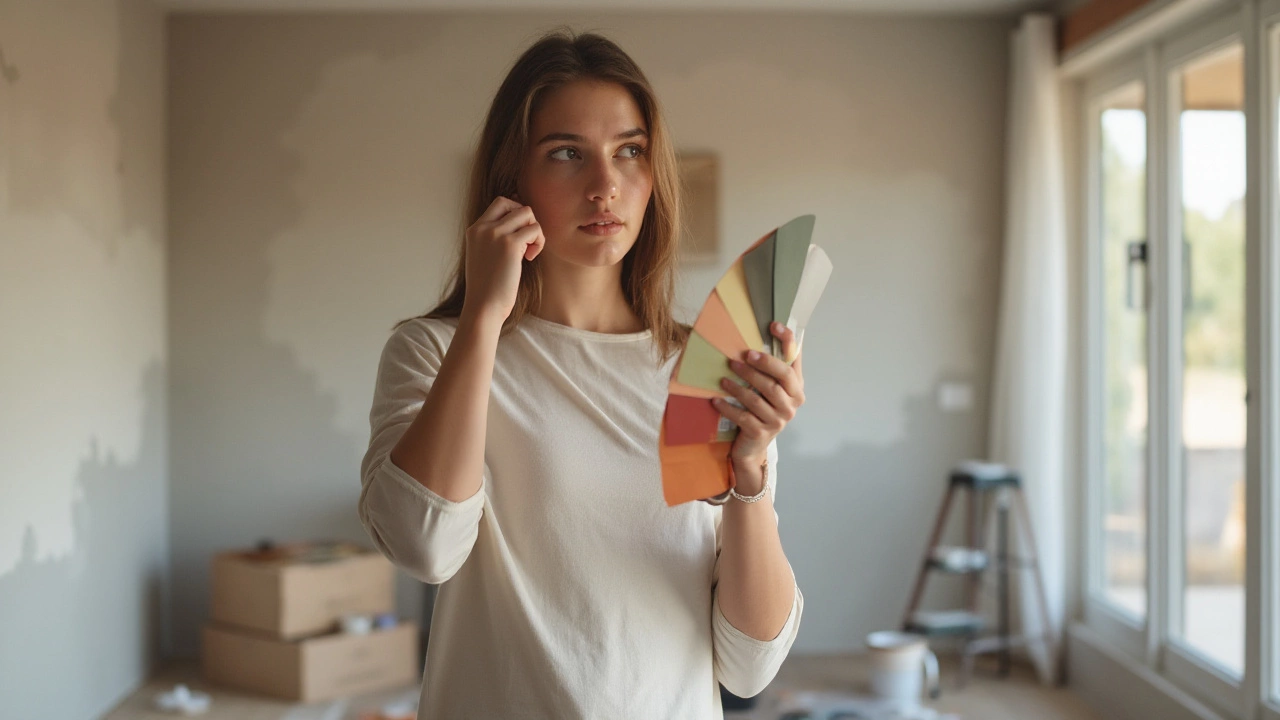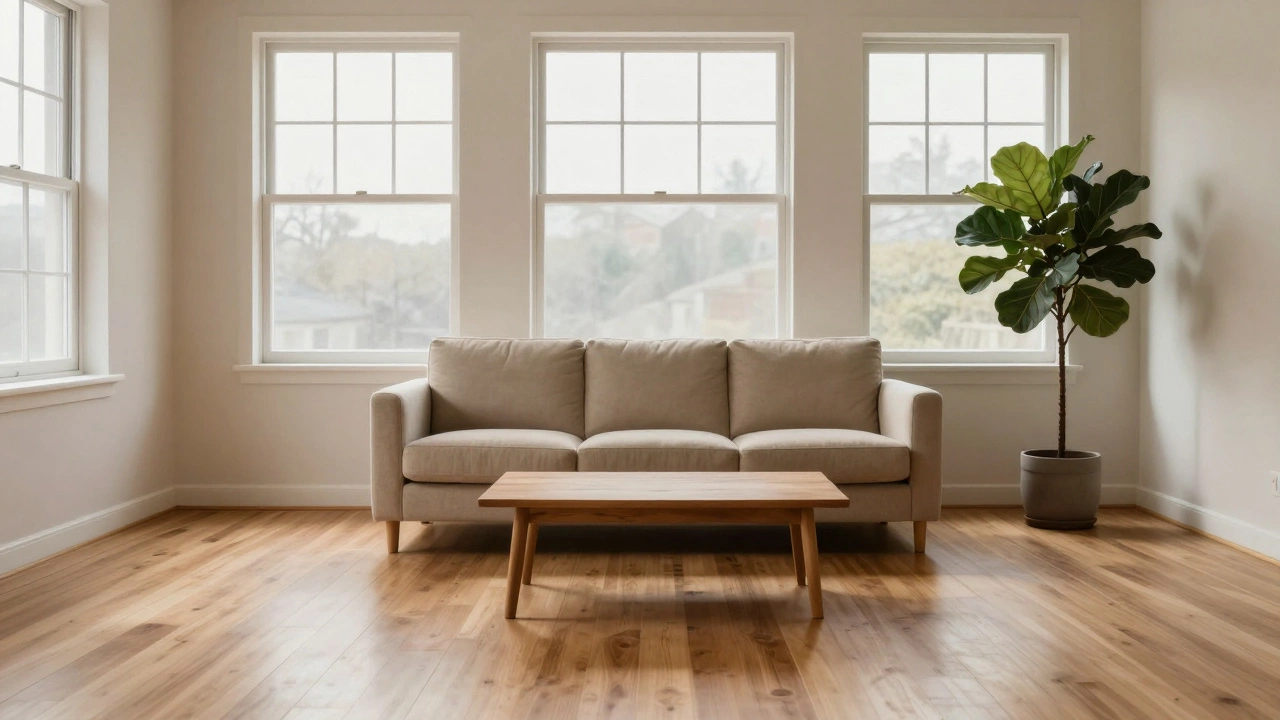Purchasing a new build comes with the excitement of crafting a space that perfectly mirrors your style. One common question that arises is, when can you paint your new walls? While the fresh slate is tempting, painting too soon can lead to issues down the road.
Knowing the right time to start painting is crucial to ensure the longevity and beauty of your home's interiors. This involves understanding how newly constructed walls need to dry, as well as the impact of various construction materials on the painting process.
Whether you're taking on the task yourself or hiring a painting crew, exploring the nuances of painting a new build can help you avoid common pitfalls. This guide will illuminate essential tips and facts to make sure your painting project runs smoothly and adds lasting appeal to your home.
- Understanding New Build Drying Time
- Selecting the Right Paint
- Preparation Before Painting
- Pros and Cons of DIY vs Professional Painting
Understanding New Build Drying Time
When you step into your brand-new home, you might be eager to splash a bit of color onto the walls, but it's essential to recognize that new builds have particular needs when it comes to drying time. The process of drying—or sometimes called curing—is crucial for ensuring the longevity and adhesion of the paint. A fresh construction, with its new plaster and drywall, still holds a significant amount of moisture. This moisture needs a good amount of time to escape before you can confidently apply your chosen hues.
Typically, builders use a special type of paint dubbed 'builder's paint', which is a basic, often matte, paint applied to the walls. While it might seem like a decent blank canvas, it's actually quite porous and was never intended as a final finish. This means it doesn't necessarily capture the essence of what your home can be once completed with higher quality home painting products. Allowing the drywall and plaster to dry thoroughly minimizes the risk of paint peeling or blotchy finishes. It may seem a test of patience, but giving those walls time to dry can be the deciding factor between a gorgeous finish and a botched job.
Recommended Waiting Periods
Experts suggest waiting anywhere from a few weeks to several months before painting a new construction. Factors such as the local climate, humidity, and season play a significant role in the drying process. Warmer, dryer climates might allow for quicker curing, whereas regions with high humidity or chillier temperatures can significantly slow the process.
"Waiting for your home's surfaces to dry properly before progressing to the painting stage is akin to baking a cake," states interior designer Emma Church. "Just as you wouldn't ice the cake straight from the oven, rushing paint onto a new build too soon could lead to a disaster."
To ensure you're on the right track, it's wise to acquire a professional's opinion or use a moisture meter, a handy tool that can measure the actual moisture content of your walls. These devices are fairly simple to use and can save you the trouble of repainting due to premature application. The precise moisture level suitable for painting can vary, but often walls should read beneath 12% humidity. This preventive measure ensures the walls will hold the paint and finish you've envisioned, enhancing not just the aesthetics but also preserving the durability of your home's surfaces.

Selecting the Right Paint
When it comes to painting your new home, the type of paint you choose is as crucial as the brush you hold. With fresh walls, the excitement to splash your personality on every corner can easily lead to opting for trendy colors. However, it's important to understand that not all paints are created equal, especially for newer builds. Different areas of your home may require different kinds of paint, depending on factors like moisture, light exposure, and wear. The key is to focus on both the aesthetic appeal and the functional attributes of the paint, ensuring it complements your lifestyle while standing the test of time.
One important consideration is the base type of the paint. Typically, paints are either oil-based or water-based, and each has its own benefits. While oil-based paints are highly durable and stain-resistant, especially suitable for trims and moldings where high gloss and a tough surface are desired, water-based paints, often preferred for their quick drying times and lower volatile organic compounds (VOCs), are favored for interior walls. Water-based variants allow for easy clean-up with soap and water, making them friendlier for DIY enthusiasts. Choosing the right base can significantly affect the texture and longevity of the paint on your new build.
Painting finishes also play a huge role in how your color presents itself and functions in specific spaces. There are several finishes to choose from, including flat, matte, eggshell, satin, semi-gloss, and high-gloss. Flat paints, devoid of sheen, can mask wall imperfections better than their shinier counterparts and are ideal for ceilings and low-traffic rooms. On the other hand, semi-gloss and high-gloss paints, noted for their reflective qualities, are excellent for areas like kitchens and bathrooms where moisture and splashes are common. They add a bright, polished look that can make cleaning spills a quick chore.
Furthermore, paint often comes with varied levels of VOCs, substances that vaporize and can cause air quality issues. For the health and well-being of your home, opting for low-VOC or zero-VOC paints is recommended, especially in bedrooms and nurseries. As GreenBuildingAdvisor.com cites, "Choosing low-VOC paints for the interior not only ensures the beauty of your home but supports healthier living environments with reduced indoor air pollution." Such paints are not just less pungent but contribute to creating safer spaces for every family member.
A final factor to consider when picking paint for your new build is the brand and quality. While budget-friendly options can be alluring, investing in quality brands can ensure greater coverage, vibrant colors, and durability that withstands the daily wear of an active household. Formulas designed specifically for newer constructions are also available, catering to walls that are still curing and drying, thereby delivering long-lasting results.
Depending on your project's needs and your inclination towards environment-friendly options, here's a quick comparison table showcasing the advantages of different paint types:
| Paint Type | Benefits |
|---|---|
| Oil-Based | Highly durable, stain-resistant, ideal for trims/moldings. |
| Water-Based | Quick drying, low VOCs, easy to clean. |
| Low-VOC | Reduced pollutants, better for health, suitable for all rooms. |
| Semi-Gloss/High-Gloss | Easy to clean, bright, excellent for kitchens and bathrooms. |

Preparation Before Painting
Before you dive into painting your new build, it's essential to ensure everything is ready for a smooth and successful paint job. Preparing new walls involves more than just buying a few cans of paint. The first step is to assess the condition of the walls. Even in new constructions, walls can have imperfections like small bumps or grooves, and identifying these early makes a significant difference in the final result. It's wise to inspect every inch of your wall and make a note of any surfaces that need smoothing or patching to avoid any surprises during painting.
Addressing the issue of moisture is another critical step. New builds often have some moisture trapped in the walls due to the building process. This needs to dry out completely before paint application to ensure the coating sticks and to prevent peeling or bubbling. A common approach is to use a hygrometer to check the moisture level. For most homes, hygrometer readings lower than 15% are considered ideal for painting. In many climates, allowing the walls to cure for about four to six weeks after construction is standard practice.
The next phase involves thorough cleaning of the walls. Dust and debris can compromise paint adhesion, so wiping down walls with a damp cloth and mild detergent is often recommended. After cleaning, taping off edges, trim, and other non-paintable surfaces like electrical outlets and switches will save you from meticulous touch-ups later. Proper taping ensures crisp, clean lines that enhance your paint job's professional appearance.
"Good painting begins with good preparation. It's not just about slapping color on the wall; it's about creating a canvas that's ready for the art you're about to create," says Tom Silva, a renowned contractor and host on a popular home improvement show.
- Start by laying out protective coverings on the flooring to safeguard against spills.
- Closely examine walls for drywall tape or other construction markings.
- Be cautious with primers—ensuring they're compatible with your chosen paint type can prevent undesirable reactions.
- When sanding, opt for a fine grit to avoid scratching the new surfaces.
While preparing seems tedious, every step counts in delivering a finish that elevates a room and reflects your personal touch. Preparation minimizes issues long-term, giving both DIY enthusiasts and professional painters the confidence to paint efficiently while maximizing quality and durability.

Pros and Cons of DIY vs Professional Painting
When it comes to decorating a new build, painting is one of the most significant steps to personalize your space. The decision between tackling the project yourself or hiring professionals brings several factors to consider. First, think about your budget. Doing it yourself is often seen as the cheaper option, as you won't need to pay labor costs. However, this perception might be misleading. The expense of buying quality brushes, rollers, drop cloths, painter's tape, buckets, and ladders can add up quicker than expected. And let's not forget about getting superior quality paint, which professionals often get at a discounted rate through bulk purchasing.
The time investment is another crucial consideration. Painting a room, let alone an entire house, is time-consuming. It requires meticulous preparation like patching up nail holes, sanding imperfections, and priming surfaces. Not mentioning the actual painting process, which demands patience to ensure each coat is flawless. Unless you're experienced, it often takes significantly longer than anticipated. Professionals, on the other hand, come equipped with knowledge and expertise, ensuring a faster, efficient turnaround without sacrificing quality.
Another point to ponder over is the finished look. A professional painter knows the ins and outs of achieving the smoothest walls, sharpest trim lines, and the correct application techniques based on room type and light exposure. Paint drips, uneven coats, and difficult edges can mar an amateur's effort, potentially necessitating a costly do-over. In terms of skill, the pros have the upper hand. Another advantage of hiring a professional is the often-provided warranty on the job, reassuring you of a long-lasting finish. Like in many trades, you've probably heard the saying, "you get what you pay for." This couldn't be truer than in painting.
Safety is a crucial factor that shouldn't be overlooked, especially in areas with high ceilings or stairwells that require ladders or specialized equipment. Professional painters are trained in safety protocols and insured against any accidents that might occur, providing peace of mind. Conversely, DIY efforts can expose you to risks without proper safety measures in place, increasing the chance of injury.
"Choosing professionals ensures not only quality results but also peace of mind," says Jane Doe, an expert from The National Association of Home Builders. "Their experience and efficiency in handling complexities of a new build make a substantial difference."
Let's also consider the satisfaction factor. Completing a paint job yourself can be incredibly rewarding, giving you a sense of ownership and pride in the transformation. For those who enjoy hands-on projects, the experience itself is enriching. Yet, for some, the frustration of endless prep work and multiple coats can quickly dampen enthusiasm.
If you feel up to the task, and have ample time to spare, the DIY route on a new build might be right for you. You'll gain new skills and possibly save some money. However, for many, the jump to professional painting is worth the investment, yielding a stunning result that elevates the overall look and feel of your new home. Whichever path you choose, remember: preparation, research, and quality materials are the trinity of a successful paint job, whether done by you or a seasoned pro.



